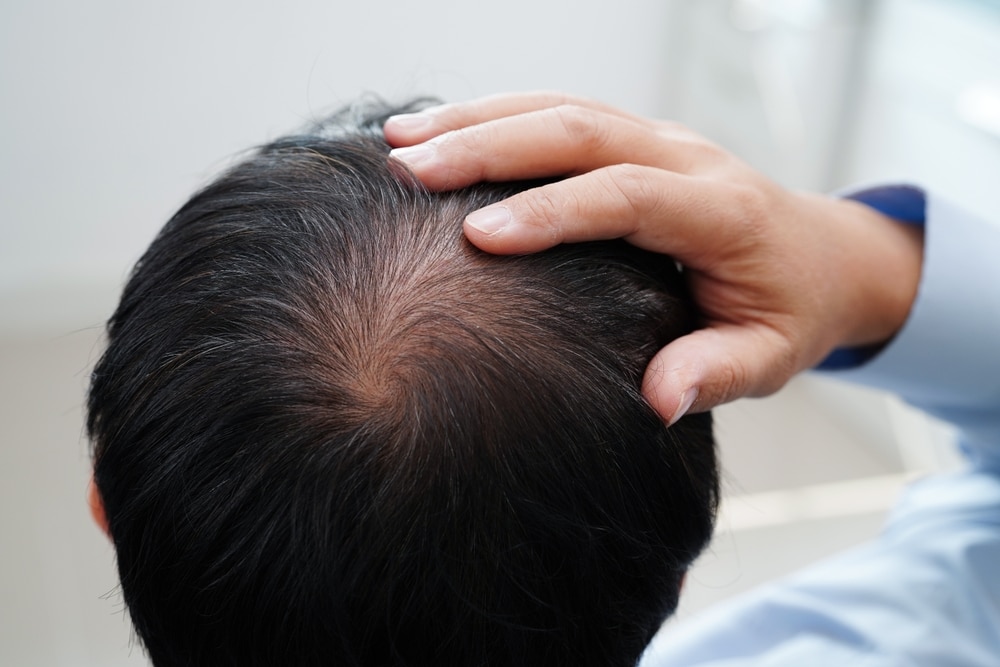Hair loss affects many people, causing not just physical changes but often emotional distress and decreased confidence. While some shedding is normal, certain patterns and symptoms suggest it’s time to consult a professional who can properly diagnose and treat the underlying cause of your hair thinning. Keep reading to learn about the key warning signs that indicate it’s time to schedule an appointment with a dermatologist to address your hair concerns.
What Causes Hair Loss?

Hair loss can stem from various factors, including genetics, hormonal changes, medical conditions, medications, and lifestyle factors. The average person loses between 50 and 100 hairs daily as part of the natural hair growth cycle, but when shedding exceeds this amount or hair doesn’t regrow, it may indicate a problem requiring medical attention.
Age-related hair thinning affects most people to some degree, with male and female pattern baldness being the most common forms of hair loss. Other causes include autoimmune conditions like alopecia areata, nutritional deficiencies, stress, thyroid disorders, and scalp infections, each requiring different treatment approaches for optimal results.
When to See a Dermatologist
Recognizing the right time to consult a dermatologist can help you address hair loss before it progresses too far. Here are eight important signs that indicate you should seek professional evaluation.
1. Sudden or Rapid Hair Loss
If you have a noticeable increase in the amount of hair shedding over a short period, it’s best to visit your dermatologist for an evaluation. This type of sudden hair loss, especially when you’re finding significantly more hair on your pillow or shower drain than usual, often signals an underlying health issue or reaction that should be evaluated by a professional.
Rapid hair loss differs from the gradual thinning associated with genetic pattern baldness and may indicate conditions like telogen effluvium, which can be triggered by illness, surgery, or extreme stress. Quick diagnosis means quicker intervention, which can lead to better outcomes for many acute hair loss conditions.
2. Patchy Hair Loss or Bald Spots
The development of distinct bald patches, especially those that appear suddenly, is rarely normal and often indicates conditions like alopecia areata. These smooth, round bald spots can vary in size and may be accompanied by itching or burning sensations in some cases.
Multiple or expanding bald patches require proper evaluation to determine whether they’re caused by an autoimmune condition, fungal infection, or other factors. Professional treatment can often stop the progression and promote regrowth, particularly when addressed early.
3. Receding Hairline or Thinning at the Crown
A gradually retreating hairline or noticeable thinning at the crown of the head often indicates androgenetic alopecia, commonly known as male or female pattern baldness. While this type of hair loss is genetically influenced, early intervention with prescription treatments can significantly slow its progression and maintain existing hair.
Women may notice widening of their part line or overall reduction in hair volume, while men typically experience recession at the temples, followed by thinning at the crown. These patterns deserve attention from a dermatologist who can recommend proven therapies based on your specific pattern and stage of hair loss.

4. Hair Loss Accompanied by Scalp Changes
When hair loss occurs alongside scalp symptoms like redness, itching, and scarring, it suggests an underlying scalp condition. These accompanying symptoms may indicate conditions such as scarring alopecia that requires specific treatment approaches. Your dermatology provider can diagnose scarring alopecia through a physical examination and scalp biopsy.
5. Hair Breakage vs. Hair Loss
Distinguishing between hair that is breaking and hair that is shedding from the root is important for determining proper treatment. True hair loss involves complete shedding from the follicle, while breakage occurs when the hair shaft breaks due to damage, leaving the follicle intact.
Excessive breakage may result from harsh hair treatments, improper styling practices, or nutritional deficiencies rather than a medical condition affecting the follicles themselves. A dermatologist can determine whether you’re experiencing true hair loss, breakage, or both, and recommend appropriate interventions.
6. Hair Loss Following Medication Changes or Illness
Hair loss that begins within a few months after starting a new medication, undergoing surgery, experiencing high fever, or recovering from a significant illness often indicates telogen effluvium. This temporary shedding occurs when a stressful event pushes a large number of hair follicles into the resting phase simultaneously.
While telogen effluvium typically resolves on its own once the trigger is removed, a dermatologist can confirm the diagnosis and rule out other causes. They can also recommend supportive treatments to minimize shedding and expedite recovery of normal hair growth.
7. Hair Loss That Affects Your Emotional Well-being
Hair loss that causes significant emotional distress, affects your social activities, or impacts your self-confidence is reason enough to consult a dermatologist. The psychological impact of hair loss is widely recognized within the medical community as a valid concern warranting proper evaluation and treatment.
Many people underestimate how emotionally taxing hair loss can be until they experience it personally. A dermatologist can not only address the physical aspects of hair loss but also provide realistic expectations about treatment outcomes and possibly refer you to support resources if needed.
8. Failed Over-the-Counter Treatments
If you’ve diligently used over-the-counter hair loss products for at least six months without improvement, it’s time to see a dermatologist. Non-prescription treatments have limitations in terms of strength and ability to address specific causes of hair loss.
Prescription options, in-office procedures, and comprehensive treatment plans offered by dermatologists can be significantly more effective than retail products. A properly diagnosed condition treated with medical-grade solutions provides the best chance for successful hair retention and regrowth.
Taking Action Against Hair Loss
Hair loss can be effectively managed or treated in many cases, especially when addressed early before permanent follicle damage occurs. Remember that hair loss treatments typically require patience, as visible improvements may take several months to appear. Following your dermatologist’s recommendations consistently gives you the best chance for successful outcomes and maintaining your hair health for the long term.
At Moy-Fincher-Chipps, in addition to medicinal and topical options, we offer two procedures that we recommend for treating hair loss: PRP (platelet-rich plasma) and LaseMD. Many patients have seen beautiful results from these treatments.
If you have questions about your hair, skin, or nails, schedule an appointment at Moy-Fincher-Chipps today!





